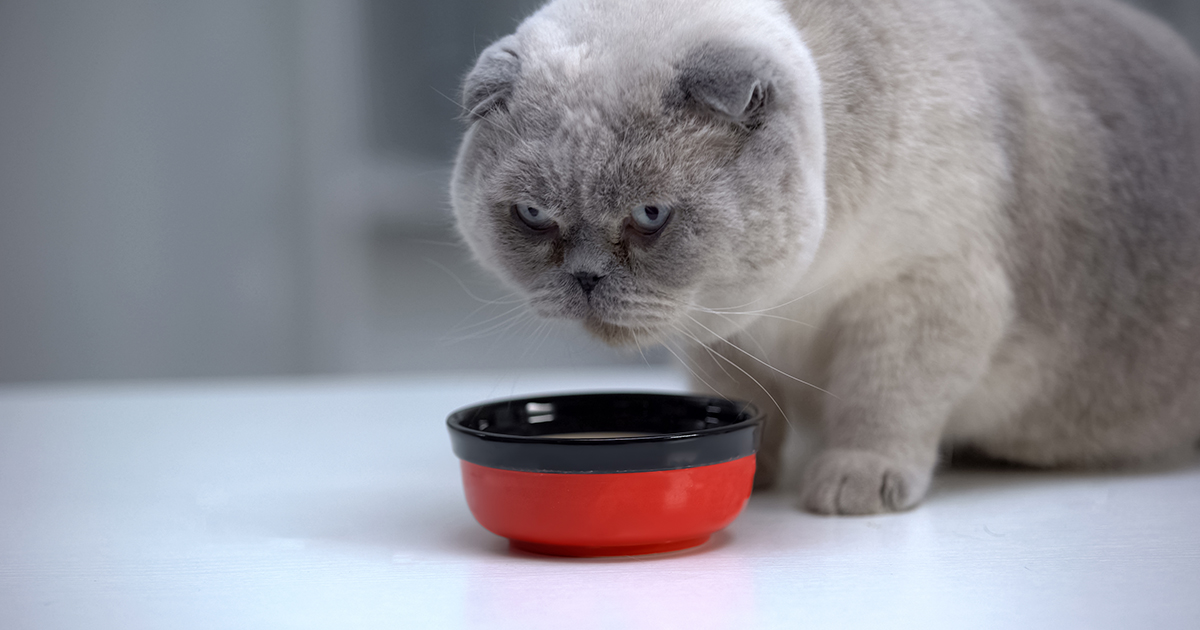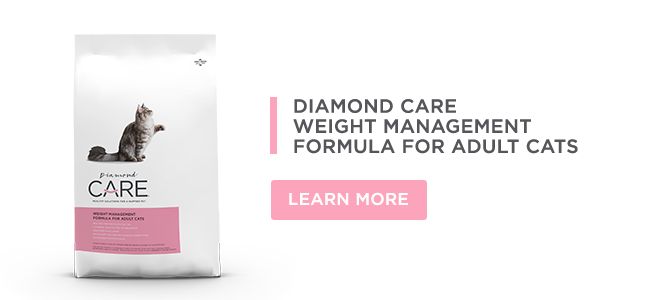Whether it’s at the dinner table or around your feet in the kitchen, a begging cat can quickly go from “Aww, that’s cute” to “Again? I just fed you.” If your cat seems to be constantly hungry, there are a few things you can try to take the edge off, including feeding a diet that helps them feel full.
Multiple Systems Control Appetite
To start with, let’s look at how your cat’s body knows when and how much food to eat. The central nervous system, digestive system and endocrine (hormonal) system all work together to control your cat’s appetite. There are two key centers in your cat’s brain that control hunger and fullness. Hunger triggers the appetite center of your cat’s brain, which stimulates them to eat. The satiety center of the brain tells your cat they have eaten enough.
The digestion system influences food intake in a number of ways. Distention of the stomach and intestines; stomach emptying rate; key digestive hormone release; and absorption of nutrients, including glucose, amino acids and fatty acids, all play a role in food intake.
First Step: Vet Check
If your cat is constantly asking for more food, it’s a good idea to have your veterinarian examine them, as there may be a medical reason behind their begging. Hyperthyroidism and diabetes can cause an increased appetite, as can intestinal worms. Certain medications can increase appetite, and so do pregnancy and lactation. A diet that is not nutritionally balanced can also cause an always-hungry cat.
Once you’re sure there isn’t a medical or nutritional issue behind your cat’s begging, it’s time to look at the solutions. One idea to try is feeding a higher-fiber diet to naturally increase your cat’s satiety (sense of feeling full).
Fiber’s Role in Satiety
There are two types of fiber — soluble and insoluble — and both types promote satiety. Soluble fiber absorbs water and turns into a gel-like substance, which slows down food digestion. Insoluble fiber does not absorb water, but it does help move food through the intestines (stimulates intestinal motility). Higher levels of fiber in a diet increase bulk (gastric fill) and can help improve your cat’s sense of fullness after eating.
Weight Management Diets Support Satiety
Weight management diets tend to be formulated with more fiber to help cats feel full and naturally want to eat less. High-protein and low-carbohydrate diets can also support satiety and delay stomach emptying. If you help your cat feel full after a meal, they will be less tempted to beg for treats or snacks, which can contribute to a higher risk of obesity.
More Tips to Stop Begging
The best (but possibly the hardest) thing you can do to stop your cat from begging is to ignore them. Whether it’s at the dinner table or in the kitchen, ignoring your begging kitty will help break the habit when their insistent meows are no longer rewarded with food or a treat. You could also try feeding smaller, more frequent meals throughout the day, or use a food puzzle to keep your cat mentally engaged, which will burn calories, too — a nice bonus for overweight cats.
RELATED POST: Five Reasons to Tell Your Cat “No People Food”








